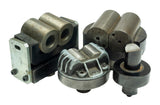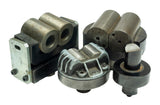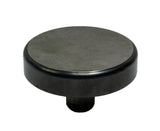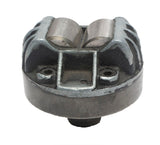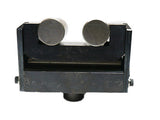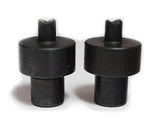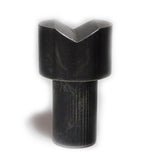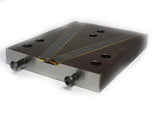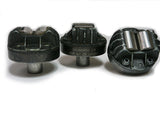Spectrographic Ltd
Anvils for Hardness Testers
| Image | Part Number | Price | Variant | Purchase Quantity |
|---|---|---|---|---|

|
BOXDCCYL | £168.00 | C -Cylinder Anvil for Rockwell Hardness Tester 19mm fitting | |

|
BOXDVCYL | £168.00 | V-type Anvil for Rockwell Hardness Tester 19mm fitting | |

|
anvil1456 | £168.00 | E - Cylinder Anvil for Rockwell hardness tester 19mm fitting. Self levelling platform, 22mm hardened cylinders. | |

|
anvil1457 | £168.00 | F - V Anvil (10mm) for wire samples Rockwell hardness tester 19mm fitting. Self levelling platform, 22mm hardened cylinders | |

|
anvil1458 | £168.00 | Anvil 3 | |
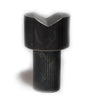
|
anvil1459 | £168.00 | G - Rockwell hardness tester 25mm fitting., 40mmhead with 8mm V | |

|
anvil14510 | £168.00 | H - E - Cylinder Anvil for Rockwell hardness tester 19mm fitting. , 30mm hardened cylinders |
Spectrographic Ltd
Anvils for Hardness Testers
- V (Vee) anvils are used for cylindrical shaped rods or tubing
- Flat anvils are primarily used primarily for small and large test specimens that are flat
- Anvil, Cylindron (Roller Anvil) is designed to support cylindrical work
Why is it important to use an Anvil?
Anvils help ensure accurate test results by supporting the test specimen during the application of the major load during a hardness test. Rockwell anvils are compatible with most Rockwelhardness testers.
What happens if I don’t use the proper anvil for my test specimen?
Just one regular Rockwell hardness number represents a vertical movement of the penetrator of only 0.002mm, or 80 millionths of an inch (0.000080 inch) One superficial Rockwell number represents a vertical movement of 40 millionths of an inch (0.000040 inch). A vertical shift of the part being tested of only 0.001 in. will lower the Rockwell reading by more than 10 numbers on the regular and 20 numbers on the superficial scale.
Selecting the proper anvil will help ensure accurate hardness measurements. Spectrographic offers a range of various styles of anvils to help ensure that the sample remains stationary.
- V (Vee) anvils are used for cylindrical shaped rods or tubing
- Flat anvils are primarily used primarily for small and large test specimens that are flat
- Anvil, Cylindron (Roller Anvil) is designed to support cylindrical work
Why is it important to use an Anvil?
Anvils help ensure accurate test results by supporting the test specimen during the application of the major load during a hardness test. Rockwell anvils are compatible with most Rockwelhardness testers.
What happens if I don’t use the proper anvil for my test specimen?
Just one regular Rockwell hardness number represents a vertical movement of the penetrator of only 0.002mm, or 80 millionths of an inch (0.000080 inch) One superficial Rockwell number represents a vertical movement of 40 millionths of an inch (0.000040 inch). A vertical shift of the part being tested of only 0.001 in. will lower the Rockwell reading by more than 10 numbers on the regular and 20 numbers on the superficial scale.

